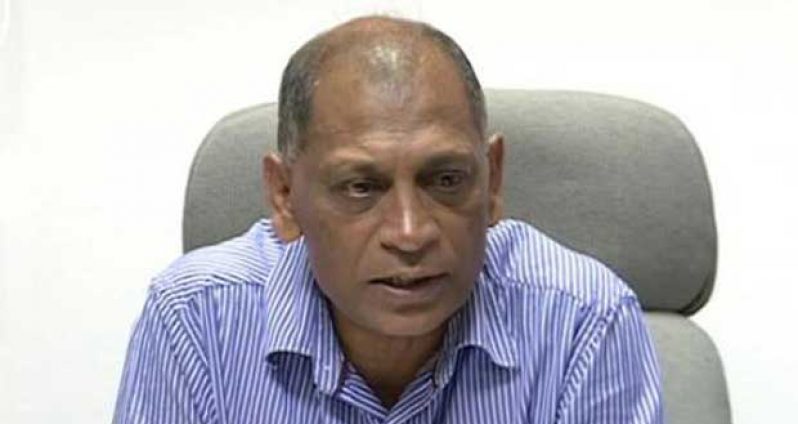GUYANA has reportedly flirted before with aquaculture, and has learnt valuable lessons on the importance of measuring up the global aquaculture market before nose-diving into the industry and surfacing with a loss.
Years ago, aquaculture was reportedly touted as a strong emerging sector, but enthusiasm waned reportedly because policy makers at the time plunged into the business without working out its kinks.
The past few years, efforts have been geared at rebuilding the aquaculture industry, this time on a firm footing to sustain itself, with the hope of exporting by 2012.
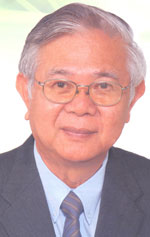
Guyana at one time used to export small quantities of tilapia to sister Caricom state Trinidad and Tobago. As part of the rebuilding process, the Government would most likely move to enact legislation to regulate the industry, which Agriculture Minister Dr Leslie Ramsammy said has a bright future.
Guyana, he said, has enough aquaculture fields to satisfy local demand for tilapia and to satisfy the lucrative market in Trinidad and Tobago. But cost of production is a major issue, and this is what caused Guyana to hold back on its deep forward thrust into the industry.
Simply put, Dr Ramsammy said Guyana cannot compete with China and the United States to enter the Trinidad and Tobago market, or other markets further afield.
“So while the market is available, some people did not think it through, and (they) believe that you can just go and do it. And so the great enthusiasm that we started out with has died down.
“There are lucrative markets in North America, Europe et cetera, but what is lucrative market?
You have to be able to compete with other producers; and so, when you look at our cost of production, we cannot compete with the US because their cost of production is much lower than (ours); and China does integrated farming using cheap feed,” Dr Ramsammy said.
MUCH WORK TO BE DONE
There is much more work that needs to be done to make Guyana’s aquaculture competitive, and Guyana is working on developing a fish feed so that local aquaculture production can becommercially viable.
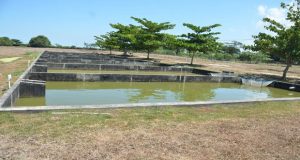
While there is a ready market in Trinidad and Tobago, it does not make economic sense for Guyana to sell tilapia to that Caricom state. The price that China sells to Trinidad and Tobago, Dr Ramsammy pointed out, is less than two-thirds the price that Guyana is asking for, or sees as reasonable.
The focus now, he said, is to lay a solid foundation for the industry to develop and thrive, bringing decent returns to both farmers and fisher folk.
A few weeks ago, seasoned private and public sector manager Dr Leslie Chin suggested that, although the Guyana Sugar Corporation (GuySuCo) is in the business of sugar, it should consider looking beyond sugar in its diversification plan.
Dr Chin told the Guyana Chronicle that a possible area of GuySuCo investment could be in aquaculture, pointing out that the Corporation can test the viability of this option during the periods when fields are flooded.
GOOD TIME FOR EXPLOITATION
Every five years, GuySuCo flood-fallows its fields to improve soil fertility, to enable high quality sugar cane; and according to Dr Chin, perhaps it might be feasible for the Corporation to exploit this time for aquaculture production.
He explained that it would not be “taking away” from sugar, but would help GuySuCo to gain maximum benefits from its fields while supporting value-added.
According to Dr Chin, aquaculture would not be a competing product, but a complementary one; and its success would contribute to the success of the Corporation.
He suggested that, for a start, the Corporation could, at a small fee, rent the flooded fields to aquaculture farmers for a period of six months, or allow them to use the fields for free, just to see how things would develop. The objective is to see how the business works, as it would be a win-win situation for all involved. The farmers would gain from cultivating on rented lands at cheap rates; while, for GuySuCo, it will be a first-hand experience of how the business works, and an opportunity to know what to do to improve it.
Once successful, Dr Chin said, GuySuCo could retake the fields and get into production using the expertise at its disposal.
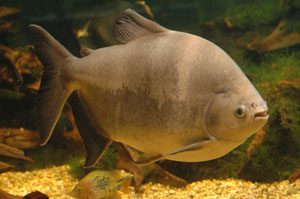

MUCH WORK REQUIRED
Dr Ramsammy said that while the idea is a great one, it would require some work, and it is not a current priority of GuySuCo, which is focused on upgrading its factories and embarking on other areas of diversification to ensure its financial viability.
He explained that utilising the fields during the flood-fallow period will be a challenge, since the life cycle of tilapia or tambaqui does not fit within that time.
The period for flood-fallow is between three to six months, and the life cycle of these fish is more than that time if they were to be grown to achieve the weight required for them to be sold on the export market.
If GuySuCo were to implement the idea suggested by Dr Chin, the Agriculture Minister related, it would require the Corporation to use a system where the fish are transferred to another field when the flood-fallow time of a particular field ends.
The second option, he said, would be to extend the flood-fallow period, but he explained that if this is done, it would take away from cultivation.
NOT READY
“We are not ready for that kind of thing, unless we complete our research. To do it with sugar would not happen in the near future, because the logistics and timeline do not fit. We tried it with the rice fields, and many farmers find it inconvenient to do that,” Dr Ramsammy noted.
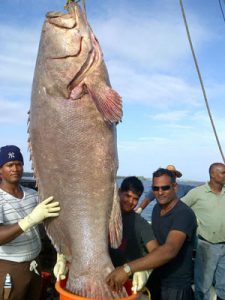
There are, currently, about 12 significant players in the aquaculture industry, who, combined, operate an area of about 3,000 hectares.
Dr Chin said that, with better management and support, the industry can regain momentum and become a force to be reckoned with. He pointed out that energies are being channelled in this direction.
Focus would be placed on rearing tambaqui, also known in Guyana as Fresh Water Pacu, Dr Chin said, informing this publication that the fish is accepted in European markets.
Guyana is blessed with an abundance of land, water, and an ideal climate for aquaculture; and according to Dr Chin, if rearing of these two species is successful, attention would be expanded to include shrimp and crayfish.
Today, aquaculture is the fastest growing sub-sector in agriculture, and aside from tourism, it is the second fastest growing sector globally. More than 50 per cent of all fish consumed worldwide come from artificial ponds on land and marine cages, compared to some 7 per cent 45 years ago.
According to Dr Chin, some Food and Agriculture Organisation (FAO) experts have unofficially estimated that, in the next 50 years, some 99 per cent of all fish consumed would come from aquaculture.
By Tajeram Mohabir



.jpg)



